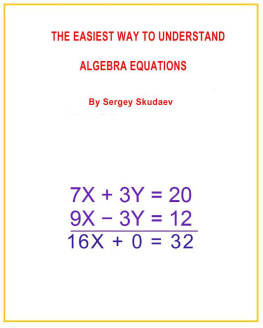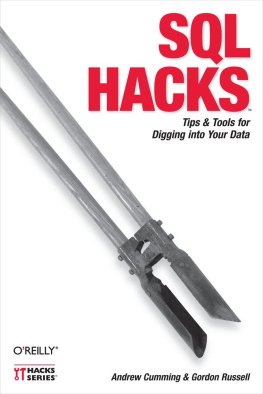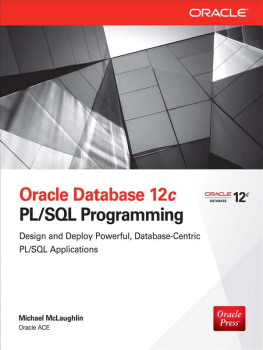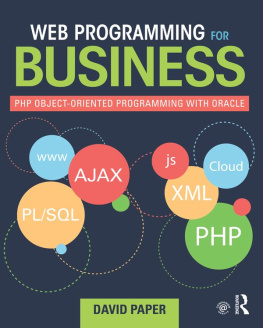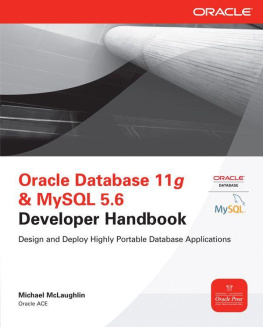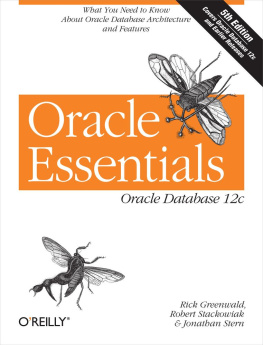PHP Programming for Beginners
Key Programming Concepts. How to use PHP with MySQL and Oracle databases (MySqli, PDO)
Sergey D Skudaev
Sergey D Skudaev, 2018 ISBN 978-5-4490-9015-7 Created with Ridero smart publishing system
Introduction
DISCLAIMER
The information presented in this eBook is sold without warranty either expressed or implied. The author will hold no liability for any damages caused either directly or indirectly by the instructions contained in this book, or by the software products recommended for installation and usage.
Who Should Read This Book?
Those who wish to learn computer programming in PHP should be familiar with HTML, as a knowledge of HTML will be helpful in your efforts. This book is also for those who know other programming languages and wish to learn PHP as well. PHP is a server-side scripting language executed on a web server, sending HTML pages to the browser.
Included in the following are instructions for the installation of Apache Web Server, PHP, MySQL database, and phpMyAdmin script used for MySQL database administration. And please note that all of the above-mentioned software can be readily obtained and used free of charge. Programming in any computer language or script is not as impossible as one might think. Perhaps youre thinking that being very good at math is a prerequisite to becoming a computer programmer, however, this is not necessarily so. The average person can master computer programming. In fact, a study revealed that, among immigrants, former musicians tended to make good programmers, probably because writing music is much like writing code.
In a sense, programming is like packaging something because programming language deals with variables that are used to hold different pieces of data. What is a variable? Think of a variable as you would a box for packaging. When you select a box, you must consider the size and nature of the item (s) being packaged. Numbers, text strings, and objects are what comprise a computer program. A variable might contain whole numbers, fractions, or pieces or strings of text. A variable that contains a whole number is called an integer.
A variable holding a number with a decimal point is called a float or double, while a variable holding a piece of text is called a string. Computer programs begin with a variable declaration and, with some exceptions, the data type. For example, in C++ or Java, you must declare the variable name and exact data type. A variable name, in any computer language, must be only one word. It may contain alphabetical characters, numbers, and underscores. Often programmers use prefixes to show variable data types.
For example, strName for a string data type or int_Account for an integer data type, and so on. The integer, double, string, and date are all data types. Each data type requires a different space in the computer memory. For example, an integer occupies four bytes, or, because there are 8 bits to a byte, 32 bits a bit being the smallest unit of information. A bit may contain a 0 or a 1. In the binary system 00000001 equals 1, 00000010 equals 2, 11111111 equals 256, or 2 to the 8th power.
Four bytes can hold numbers from -2,147,483,648 to +2,147,483,647. A Double occupies 8 bytes. Huge numbers with decimals can be held in a double. A float occupies 4 bytes and can hold a number with decimals. When selecting a gift box for a diamond ring, you wouldnt choose a yard-by-yard box because it wouldnt be a very efficient way to package a ring. Likewise, with variables, youll want to declare the data types according to the space requirements for efficient use of computer memory.
When it is important that code lines are not broken in the script, but the page width does not allow for their display without breaking, I use <=> to indicate that this line of code is to be continued, uninterrupted, on one line uninterrupted.
Declaration of variables
A computer program starts with the declaration of variables. In PHP you do not have to declare a data type. A variable name in PHP is preceded with a $ sign. For example, $n=0; The string of text should be enclosed in either single or double quotation marks. For example: $firstname=Alexander; Or $lastname=Makedonski; $name=Alexander Makedonski; As you may have noticed, a line of code in PHP is ended with a semicolon.
Its always good practice to add comments when writing code, as they will enable you to better understand the meaning later. Also, if someone else reads or modifies your code, comments may be helpful. Comments must be preceded by two back slashes or placed between asterisks and backslashes: /* this is code comment */ //this is another code comment All PHP code blocks start with a "
Function
A function is a piece of code that performs a specific manipulation with variables and then returns the result from that manipulation. Functions are useful because they can be used multiple times over. There are PHP functions that are built-in, but a function can also be created by the user. Lets create one that converts Fahrenheit to Celsius.
The PHP function declaration begins with the word function to be followed by the function name, which should be one word. Several parameters can be given to a function, but a function can only return one parameter in the return statement. Multiple parameters are enclosed together in parentheses and separated by comas. The entire piece of code inside a function is enclosed in curly brackets. In our example, we pass one parameter, a temperature in Fahrenheit, and return a temperature in Celsius. $T= convertFtoC (80); echo $T.
; The Output: will be 27 The round is a built-in PHP function. $T= convertFtoC (80); echo $T.
; The Output: will be 27 The round is a built-in PHP function.
It will round 26.6666666667 to 27.
Variable Scope
Variables in the PHP code may have different scopes. They may be seen or accessed globally, anywhere on the current php page or only inside the function. Let us analyze the following code:
PHP Array Functions
Arrays are used in any programming language. You can imagine an array as a long box with many identical compartments. Visualize it like this: |___|___|___|___|___|.
Whatever you place in a compartment is that particular compartments value. Lets place the characters a, b, c, d and e in the following array of compartments: |_a_|_b_|_c_|_d_|_e_| Now, to access any of these values, youll need to know which compartment the value is stored in. For example, b is stored in the second compartment. In most computer languages, array index counting starts from 0, not 1, meaning that the index of the first element of the array is 0, the index of the second element of the array is 1 and so on. In the following array of names, you see the indexes and values: //declare an array of names $names=array (); $names [0] =John; $names [1] =George; $names [2] =James; $names [3] =Anna; $names [4] =Robert; $names [5] =John; $names [6] =James; $names [7] =George; $names [8] =Maria; $names [9] =Peter; $names [10] =James; To display Anna you have to access the element (compartment) with the index 3. If you use the print command, print ($names [3]); The built-in function sizeof (array) returns the number of elements in an array.
In this case, $asize=sizeof ($names); Or you can use the count function $asize=count ($names); To display all array values, we can use the for loop. The for loop looks like this: for ($i=0; $i <$asize; $i++) print ($names [$i].
); In the for loop, the $i variable is incremented from 0 to the value one less than the $asize value. If the array has 11 elements, the $sizeof () function will return 11. The $i variable will be incremented to 10 and then stops. You might assume that if $i stops at 10, and we have 11 elements, the last array element would not be displayed. However, that assumption would be wrong because the first array element index is 0, the eleventh element will have index 10, and so our code will display the element index 10, which is the 11th element of the array.


